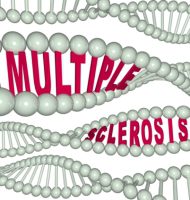הודעת מרק סרונו
הנתונים שהוצגו בכנס 2019 AAN, בפילידלפיה ארה”ב, מתבססים על מחקר ה- ORACLE-MS, באשר לניתוח פרק הזמן עד לתחילת ההשפעה של טבליות מייבנקלאד (קלדריבין) 10 מ”ג על תוצאות MRI במחקר.
מהנתונים עולה כי במטופלים עם אירוע דמיאלינטיבי ראשון בסיכון גבוה להמרה ל-CDMS
(Clinically Define Multiple Sclerosis), מתן טבליות מייבנקלאד בשנה הראשונה לטיפול, מביא להתחלת תגובה מהירה, עם השפעות מיטיבות של הטיפול על מספר הנגעים הפעילים במוח ועל נפחם, הנצפות תוך 13 שבועות.
מחקר ORACLE-MS, הינו מחקר אשר נמשך 96 שבועות, אקראי, פאזה 3, בביקורת פלצבו אשר כלל 616 נבדקים עם אירוע דמיאלינטיבי ראשון בסיכון גבוה להמרה לטרשת נפוצה. תוצאות המחקר הראו שטבליות מייבנקלאד 10 מ”ג (3.5 מ”ג/ק”ג או 5.25 מ”ג/ק”ג במינון מצטבר לאורך שנתיים) עיכבו באופן מובהק את הזמן ל- CDMS, הפחיתו את מספר הנגעים מסוגGd+ 1T (גדוליניום), את מספר הנגעים החדשים/מוגדלים או הפעילים מסוג T2 ואת המספר הנגעים הפעילים במוח CUA (ר”ת של (combined unique active lesions.
סריקות MRI בוצעו בשלב הבדיקות המקדימות לטיפול ואחת ל-12 שבועות, למטופלים שלא עברו המרה ל-CDMS במהלך המחקר. ניתוח התוצאות המבוססות על MRI בוצע בשימוש בניתוח שונות משותפת (ANCOVA) ובמודלים בינומיים שליליים. ההשפעות הזמניות של הטיפול בשנה הראשונה בטבליות מייבנקלאד ופלצבו על נגעים מסוג Gd+ 1T, נגעים פעילים מסוג T2 ומספר הנגעים הפעילים במוח יוצגו בצורה גרפית.
תוצאות הממצאים הראו כי בתום 96 שבועות, נצפתה הפחתה במספר הנגעים הממוצע מסוגGd+ 1T, נגעים פעילים מסוג T2 או במספר הנגעים הפעילים במוח למטופל, בסריקת MRI. ההפחתה הייתה גדולה באופן מובהק נומינלית בקבוצת טבליות מייבנקלאד לעומת קבוצת הפלצבו (p<0.0001).
כמו כן, נמצא שינוי בשלב מוקדם בנפח הנגעים מסוגGd+ 1T. בדומה לכך, היו הפחתות גדולות יותר במספר הממוצע של נגעים פעילים מסוג T2 ובמספר המצטבר הממוצע של נגעים פעילים במוח (CUA) עם טבליות מייבנקלאד בשבוע 13 בהשוואה לפלצבו. 13 שבועות לאחר תחילת הטיפול בטבליות מייבנקלאד, המספר הממוצע של נגעים מסוג Gd+ 1T היה 0.37 לעומת 1.0 בפלצבו.
מסקנות: מנתוני MRI אלו ממחקר ORACLE-MS בנבדקים עם אירוע דמיאלינטיבי ראשון בסיכון גבוה להמרה ל-CDMS עולה, שמתן טבליות מייבנקלאד בשנה הראשונה לטיפול, מביא להתחלת תגובה מהירה, עם השפעות מיטיבות של הטיפול על מספר הנגעים הפעילים במוח ועל נפחם, הנצפות תוך 13 שבועות.
Selected Safety Information2
Therapeutic indications: MAVENCLAD® (10 MG tablets) is indicated for the treatment of adult patients with highly active relapsing multiple sclerosis (MS) as defined by clinical or imaging features. Contraindications: Hypersensitivity to the active substance or to any of the excipients. Infection with HIV. Active chronic infection (TB or hepatitis). Initiation of cladribine treatment in immunocompromised patients, including patients currently receiving immunosuppressive or myelosuppressive therapy. Active malignancy. Moderate or severe renal impairment. Pregnancy and breast-feeding. Special warnings and precautions for use: Haematological monitoring – decreases in neutrophil count, red blood cell count, haematocrit, haemoglobin or platelet count compared to baseline values have been observed in clinical studies, although these parameters usually remain within normal limits. Additive haematological adverse reactions may be expected if cladribine is administered prior to or concomitantly with other substances that affect the haematological profile. Lymphocyte counts must be determined: • before initiating MAVENCLAD in year 1, • before initiating MAVENCLAD in year 2, • 2 and 6 months after start of treatment in each treatment year. If the lymphocyte count is below 500 cells/mm³, it should be actively monitored until values increase again. Infections – Cladribine can reduce the body’s immune defence and may increase the likelihood of infections. HIV infection, active tuberculosis and active hepatitis must be excluded before initiation of cladribine. Latent infections may be activated, including tuberculosis or hepatitis. Therefore, screening for latent infections, in particular tuberculosis and hepatitis B and C, must be performed prior to initiation of therapy in year 1 and year 2. Initiation of MAVENCLAD should be delayed until the infection has been adequately treated. A delay in initiation of cladribine should also be considered in patients with an acute infection until the infection is fully controlled. Vaccination of varicella zoster antibody-negative patients is recommended prior to initiation of cladribine therapy. Initiation of treatment with MAVENCLAD must be postponed for 4 to 6 weeks to allow for the full effect of vaccination to occur. The incidence of herpes zoster was increased in patients on cladribine. If lymphocyte counts drop below 200 cells/mm³, anti-herpes prophylaxis according to local standard practice should be considered during the time of grade 4 lymphopenia. Cases of progressive multifocal leukoencephalopathy (PML) have been reported for parenteral cladribine in patients treated for hairy cell leukaemia with a different treatment regimen. In the clinical study data base of cladribine in MS (1,976 patients, 8,650 patient years) no case of PML has been reported. A baseline MRI should be performed before initiating MAVENCLAD. Malignancies – Malignancies were observed more frequently in cladribine-treated patients compared to patients who received placebo. MAVENCLAD is contraindicated in MS patients with active malignancies. Contraception – Women of childbearing potential must prevent pregnancy by use of effective contraception during cladribine treatment and for at least 6 months after the last dose. Male patients must take precautions to prevent pregnancy of their female partner during cladribine treatment and for at least 6 months after the last dose. Blood transfusions – In patients who require blood transfusion, irradiation of cellular blood components is recommended prior to administration to prevent transfusion-related graft-versus-host disease. Switching to and from cladribine treatment – In patients who have previously been treated with immunomodulatory or immunosuppressive medicinal products the mode of action and duration of effect of the other medicinal product should be considered prior to initiation of MAVENCLAD. A potential additive effect on the immune system should also be considered when such medicinal products are used after treatment with MAVENCLAD When switching from another MS medicinal product, a baseline MRI should be performed. Hepatic impairment – Use of MAVENCLAD is not recommended in patients with moderate or severe hepatic impairment. Fructose intolerance – Patients with hereditary problems of fructose intolerance should not take this medicinal product. Undesirable effects: Summary of the safety profile – The most clinically relevant adverse reactions reported in MS patients who received cladribine at the recommended cumulative dose of 3.5 mg/kg over 2 years in clinical studies were lymphopenia and herpes zoster. For the full safety information and before prescribing Mavenclad®, please refer to the Israeli Prescribing Information MOH approved January 2018
IL/CLA/0519/0051

















השאירו תגובה
רוצה להצטרף לדיון?תרגישו חופשי לתרום!